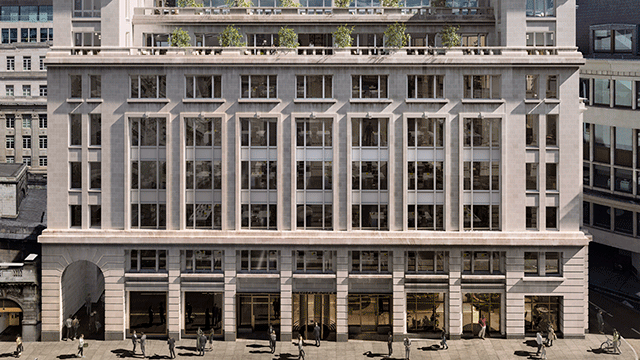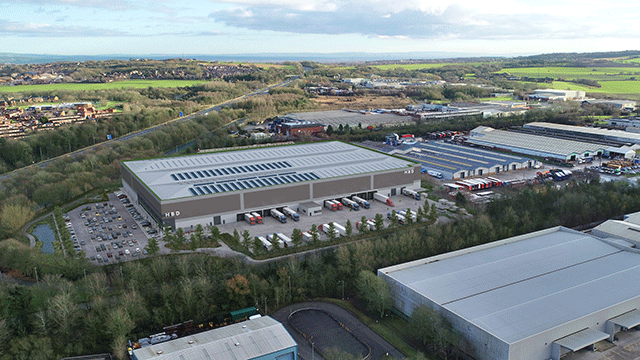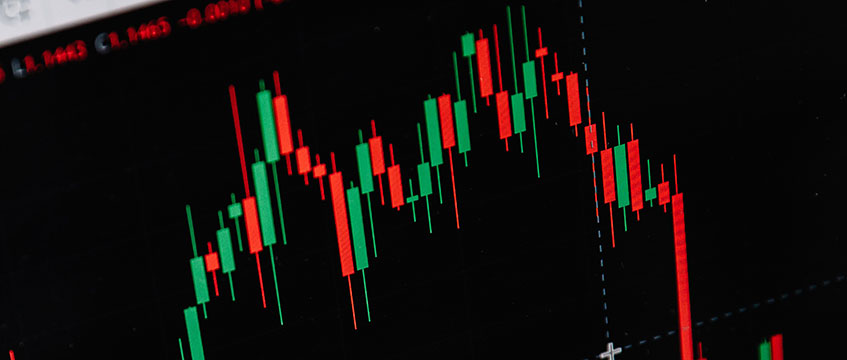Nordic real estate companies are leading the way in developing energy-efficient real estate. Skanska, Citycon and NCC all have projects underway in Sweden to develop green offices or shopping centres.
But Skanska seems to be leading the field. Earlier this year, Skanska’s office property Project Hagaporten III became the country’s first to receive EU GreenBuilding status. The 28,000 m2 office is located in Solna, northern Stockholm. GreenBuilding recognition requires that a newly constructed building has at least 25% lower energy consumption than the Swedish standards.
Skanska chief executive Johan Karlström, who took over from Stuart Graham in April, sees increasing interest among tenants and investors for green features. “A key thing is energy efficiency,” says Karlström. “It’s also important to have a life cycle approach, so that you think of the total environmental footprint and cost over the building’s lifetime. Then it’s important to use eco-friendly material and to handle waste in a proper way.”
Earlier this year, Hans Wallström, environmental manager at Skanska Commercial Development Nordic, said the firm’s goal was to see that all newly developed buildings fulfil these requirements by 2010.
Skanska is also developing a new office property with a green profile in Gothenburg. The new property, in Gårda, is expected to be the first in Gothenburg to meet the demands for the EU GreenBuilding label.
When fully constructed, the office project will comprise a total of 17,000 m2. The first phase of 12,000 m2 is scheduled to be completed in autumn 2010.
“The energy-efficient building in Gårda will have a strong environmental profile also in terms of material selection. We strive to use eco-labeled products to the greatest extent possible, for example, in terms of paint, ceilings and flooring. We also have halogen-free electrical installations that reduce the use of PVC,” explains Wallström.
In Denmark, the firm has just announced plans to construct the Havneholmen Tower in central Copenhagen. The office building, comprising 18,500 m2, is scheduled to complete in mid-2010. Skanska’s is investing SKr650m (€69m) into the 12-storey building, which comprises two towers around a central atrium.
Wallström says that energy consumption in the tower is intended to be 15% to 20% lower than the Danish energy requirements. In addition to the eco-labelled products in the building, the tenants will receive cost-free energy advisory services and company bicycles.
Erik Nyman, construction and real estate analyst at Kaupthing Bank, said that there is a demand for green buildings, but questions whether investors and tenants will be willing to pay more for it. “I don’t know if they will. Skanska claim they do, but I doubt that goes for all types of tenants at the moment. But this is the start of a long- term trend,” he says.
The Nordic region has a good reputation for leadership in environmental issues says Karlstöm. “The whole society here is pushing these issues. But I see many good projects coming also in the UK and the Czech Republic, for example. And I think the US is developing very fast right now,” he says.
However, construction costs in the Nordic region have already been increasing over the past few years, mainly as a result of the increased cost of labour and falling unemployment. These trends could prompt some developers to sideline green issues.
“It’s definitely a problem that is caused mostly by increasing material costs, and the scarcity of skilled labor. We see the same problems in most of our markets, such as in Poland, UK and the US,” says Karlström.
Despite this, the construction industry appears to be relatively unhurt by the credit market problems.
Karlström maintains that Skanska hasn’t felt any significant effects from the credit crunch yet. “Our commercial property development business is doing fine, and our leasing activities were on a very high level during last year and the first quarter this year. It’s only in the residential market in the Nordics where we have seen effects in the form of weaker sales,” he says.
With the debt markets drying up, many investors are paying increasing attention to the balance sheets of the listed property and construction companies. In such an environment, it is surprising that Skanska’s financial current liabilities in 2007 were Skr2.7bn, a marked increase from the previous year’s liabilities of Skr 1.3bn. But, despite a quiet real estate market, Karlstöm is not worried about repaying the debt.
“Skanska has a very solid balance sheet, so we are not worried about ourselves. From investors we still see a strong demand for the type of real estate products that we develop, which are modern, flexible and energy-efficient offices, retail facilities and warehouses. And there is especially strong interest in green buildings. We are quite optimistic that our projects will continue to be in good demand,” he says.
Yet Fredrik Skoglund, an analyst at Carnegie, warns that developers could be affected by the credit crunch if their clients are. “If you are working with a property developer in London, for example, the company may not want to start up any new projects at the moment, so it could indirectly affect the order intake,” he says.
Any cost increases that the group encounters as a result of rising material costs is being passed on to clients, says Skoglund. And the company’s large order backlog from 2006 and 2007 should help it to meet the 4% earnings before tax and interest (EBIT) margin goal the company set itself in the 2008-2010 business plan, entitled “Outperform II”, which follows from the previous three-year business plan “Outperform”.
Skanska’s board of directors set a goal of 18% return on equity for 2007 for the group, which it exceeded by 3.1%. This incorporated the residential development, commercial development, infrastructure development and construction divisions. The construction division accounted for 73% of the operating income in 2007. In the business plan “Outperform” the operating margin target for the construction division was 3.3%, which it exceeded by 0.1%.
In 2007 the firm reached its own new all-time high for leases, with 300,000 m2 signed. This continued during first quarter of 2008, with 81,000m2 leased.
Will the firm be able achieve the same results? “The new CEO has been with the company many years and was recently heading the US operations. He has been a big part of putting together the new business plan and the changeover has been very smooth,” Skoglund said.
Some of the business plan seems optimistic, which Skoglund said even Skanska has admitted.
“They had some targets regarding start-up of new residential units, which they wanted to increase by 50% in 2010. That is a little optimistic and they have said now they will look at that,” he says.
Although Skanska remains very much a Nordic player, the region accounted for only 42% of the company’s revenue in 2007, with the remainder in the UK, Estonia, Poland, the Czech Republic, Slovakia, Hungary, the US and Latin American countries.
During 2007, Skanska was appointed to construct the 663ft Heron Tower in the City of London. Work has now begun on the 462,000 m2 office scheme, which is located next to the Gherkin and is due to be completed in 2011.
Skanska also completed construction of a number of developments in 2007. In Warsaw, Poland it completed Zlote Tarasy, a shopping centre with office space, and the first phase of the A1 highway at Gdansk.
In the Czech Republic, Skanska completed construction of the head office of Czech Bank CSOB in Prague. It won the contract with the bank back in 2003 and was the first building in the country to be certified as complying with America’s Leadership in Energy and Environmental design (LEED) standard.
Karlstöm has expressed an interest for extending the firm’s reach into central Europe. “That could be an interesting area for our commercial development business to expand into. But no decisions have been made yet,” he says.










